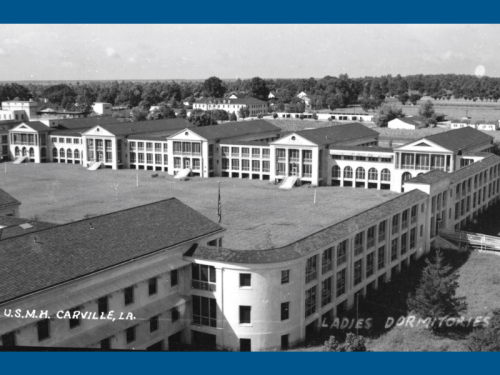New exhibition explores the history of the Carville National Leprosarium

From October 26 through February 7, 2024, the Tulane School of Public Health and Tropical Medicine will host the premiere of "Leprosy: The Separating Sickness." This compelling showcase provides an intimate glimpse into the lives of patients at the Carville National Leprosarium, as documented through the lens of Johnny P. Harmon, photographer, artist, and patient at the facility where he and his wife were residents. The collection of photographs and other memorabilia is a poignant tribute to a bygone era when leprosy, now known as Hansen's disease, led to the isolation of those afflicted.
This remarkable exhibition is sponsored by The Friends of Carville Historic District through generous funding from the Louisiana Endowment for the Humanities, the state affiliate of the National Endowment for the Humanities.
Anne Brett, Johnny Harmon's daughter and president of the Friends of Carville, culled through over 200 of her father’s photographs to create the moving collection. This exhibition brings to life the experiences of individuals who lived in dormitories on the former plantation grounds of Carville, often for the entirety of their lives. Harmon captured the essence of their existence through a collection of photographs and drawings that serve as a testament to human resilience and the power of art.
An opening seminar and reception will be held on Thursday, November 2 at 4pm, and will feature distinguished speakers, including Dr. Thomas A. LaVeist, dean of the Tulane School of Public Health and Tropical Medicine; Dr. Rie Yotsu, associate professor of tropical medicine at the same institution; and Anne Brett, who will provide insights into the historical context and the importance of preserving this unique perspective on an often-misunderstood chapter of our history.
The event promises to be a moving and thought-provoking experience, shedding light on the lives of those affected by leprosy and their unbreakable spirit in the face of adversity.
Note: Any news, findings, conclusions or recommendations expressed in this exhibition do not necessarily represent those of the National Endowment for the Humanities.
